#linda di chamounix
Explore tagged Tumblr posts
Text

This 150 years old poster show us a performance in Vienna with the great Diva Adelina Patti (1843-1919) in Donizetti‘s Opera „Linda di Chamounix“. In the cast you can also find the Tenor Ernesto Nicolini. He was later one of her husbands. The conductor was the Composer Luigi Arditi .
#classical music#opera#music history#bel canto#composer#classical composer#aria#classical studies#maestro#chest voice#Adelina Patti#The nightingale#Queen of Song#Lyric coloratura soprano#soprano#Linda di Chamounix#Gaetano Donizetti#Ernesto Nicolini#dramatic tenor#tenor#classical musician#classical musicias#classical history#historian of#historian of music#musician#musicians#diva#prima donna
6 notes
·
View notes
Text
1 note
·
View note
Text
Hot Vintage Stage Actress Round 1
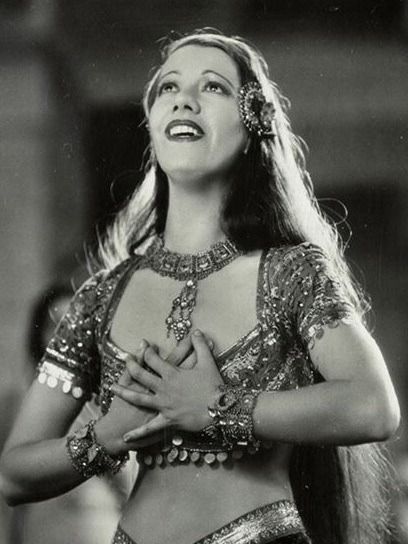
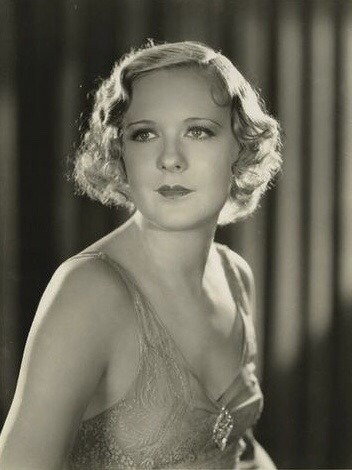
Lily Pons: Lakmé in Lakmé (1928 Mulhouse); Lucia in Lucia di Lammermoor (1931 Met); Linda in Linda di Chamounix (1934 Met)
Marilyn Miller: Ziegfeld Follies of 1918 (1918 Broadway); Sally of the Alley in Sally (1920 Broadway); Sunny in Sunny (1925 Broadway); Joan Crawford in As Thousands Cheer (1933 Broadway)
Propaganda under the cut
Lily Pons:


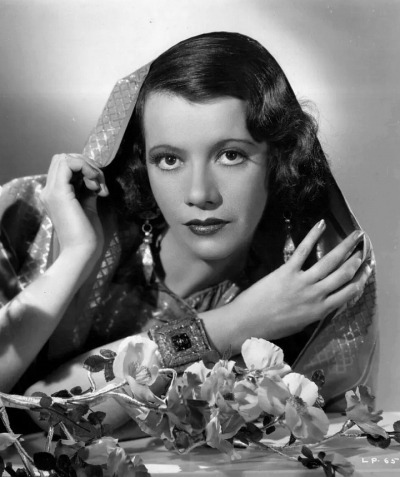
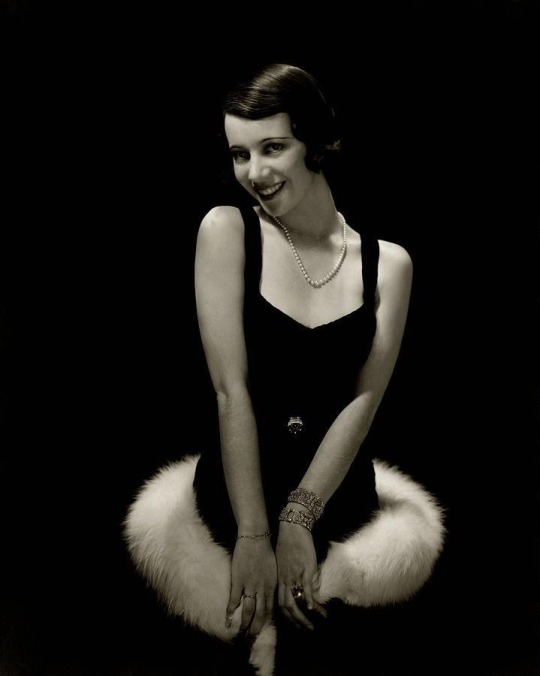
Marilyn Miller:
a bisexual queen and the namesake of marilyn monroe
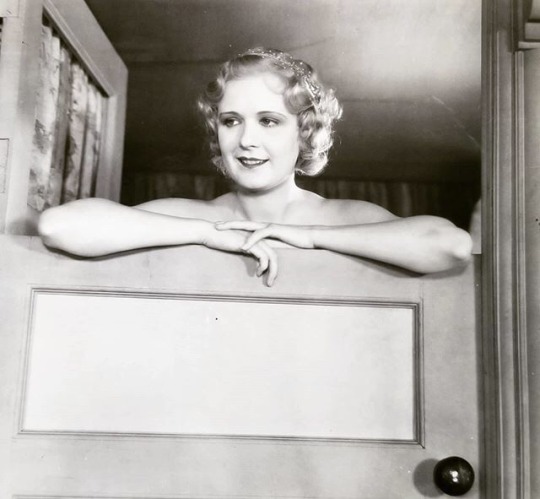
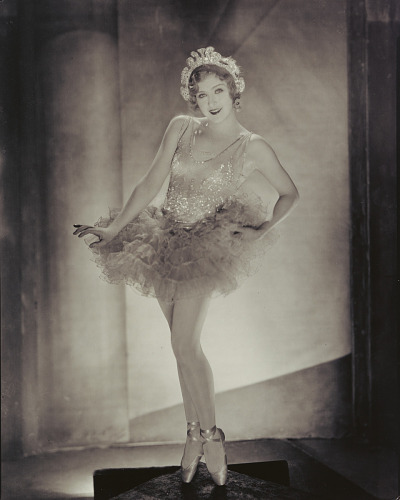

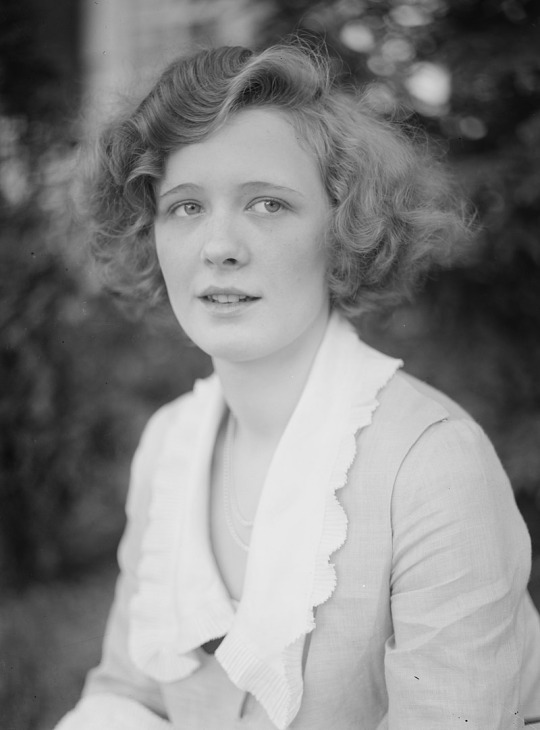
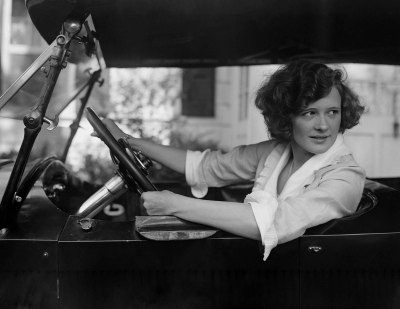
#vintagestagehotties#vintagestagepoll#vintage tournament#vintage poll#lily pons#marilyn miller#ladies round 1#vintage ladies
17 notes
·
View notes
Text
Donizetti: Linda di Chamounix / Act 1 - "Ah! tardai troppo... O luce di ...
youtube
4 notes
·
View notes
Video
youtube
"Ah, tardai troppo" from G. Donizetti’s opera Linda di Chamounix
0 notes
Text
happy birthday to yet another queen of my heart
#joan sutherland#dear god what a voice#she's the only one who gets a pass for not using her chest voice and terrible diction#i literally dont give a shit about those when i listen to her#i love her#i love her yall#and id kill to have her jaw#happy birthday queen#opera tag
2 notes
·
View notes
Text
@e-s-me (Thank you for the tag! ^^)
Put your entire music library on shuffle and list the first 10 songs, then choose your victims
1.) Buttercup – Jack Stauber
2.) La Hija De Juan Simón – Rosalía
3.) Mystery of Love – Sufjan Stevans
4.) Reel Around the Fountain – The Smiths
5.) Wait Lets Go – Thee Oh Sees
6.) No Plan – Hozier
7.) Medicine (cover) – Harry Styles
8.) The Promise – Superfruit
9.) Love Crime – Siouxsie
10.) O Luce Di Quest' Anima – Donizetti's opera 'Linda di Chamounix'
I’m tagging @luna-e-morye & @thepaintedlady-blog. Do what you want. :p
2 notes
·
View notes
Text
Mad scenes
... were a popular convention of early 19th Century French and Italian opera, frequently afflicting the soprano heroine. They are famously difficult to sing and were often written as a way for a particularly talented singer to show off her technical prowess in a dramatically plausible way.
- Lucia in Lucia di Lammermoor. She stabs her forced bridegroom Arthur to death, then shows up babbling (re: singing) madly about her beloved Edgard in the middle of the wedding party - blood splattered dress and all, few before she passes away as well. (In the original novel, Walter Scott's "Bride of Lamermoor" which was Very Loosely Based on a True Story, Lucia's madness is surprisingly un-aestheticised, so doesn't count).
- Linda in Linda di Chamounix has the unusual good fortune of getting over it and having a happily-ever-after.
- Margeurite in Gounod's Faust goes mad after falling pregnant and committing infanticide, and sings, of course, about flowers.
- Elvira, the heroine of Bellini's I Puritani, goes mad after her beloved Arturo apparently jilts her (he was actually on an important spy mission). She spends all of act II and most of act III in a very extended mad scene before being reunited with Arturo and getting a happy ending.
- Anna Bolena in Donizetti's opera of the same name fades in and out of madness at the place of execution. She imagines she is back at her wedding day to the King, and is terrified lest her true lover, Percy, should discover her treachery. She comes out of it at the end to go to her death with dignity and with dubious words of forgiveness for Enrico and Giovanna on her lips. Imogene in Vincenzo Bellini's Il Pirata loses it completely as her former lover turned Pirate is led to his execution. She ends the scene with a plea to the sun to veil its light, so she will not have to witness the hanging of her true love.
- Ambroise Thomas has an actual Ophelia in his operatic version of Hamlet complete with a mad scene complete with flowers and visions of mermaids.
x
47 notes
·
View notes
Text
I’m angry at the Mariinsky theatre! Well, that happens quite a lot (complicated relationship, you know?))) This time it’s the schedule! They have this nasty habit of putting two things I want to see on the same evening! This time a couple of layers of my opera obsession will come together on 11 April - on the one hand, this season I wanted to continue with their bel canto consert series - last season I saw 3 or 4 not so common Donizetti and Bellini’s things - loved some while others not so much but this season they’re doing some more! I’ve already seen Linda di Chamounix, so I decided to go to Gemma di Vergy (https://fr.wikipedia.org/wiki/Gemma_di_Vergy), Beatrice di Tenda (https://en.wikipedia.org/wiki/Beatrice_di_Tenda) and La vestale by Spontini (https://en.wikipedia.org/wiki/La_vestale_(Spontini)). With the last one (I think) being the rarest... But there’s ‘on the other hand’ as you can imagine... This year I wanted to see the whole Ring in the right order... I’ve seen them all but never all 4 in one run! And this time Elena Stikhina is going to be in three of them (not at all sure this rep is a good idea for her, but well - it’s another can of worms I’m not willing to open just now!) But Siegfried is on April 11 as well! It’s like you’ve got to be effing kidding me! 3 stages in this city alone! 11 months long season - and you’ve chosen the same day for two things I really want to see?!!! What the...Urgghhh... Should I stick with the Ring plan or just go to Die Walküre (which is my favourite part of the Ring and I think Sieglinde is the best fit for Stikhina out of them all)? Or should I abandon it, or at least Siegfried, and go hear La vestale? But then it’s not the whole Ring... and also these 4 are kind of expensive - unlike the bel canto nes in consert. So, as you’ve definitely realised if you read thus far, I’m really torn! Frustrating that is...
0 notes
Photo


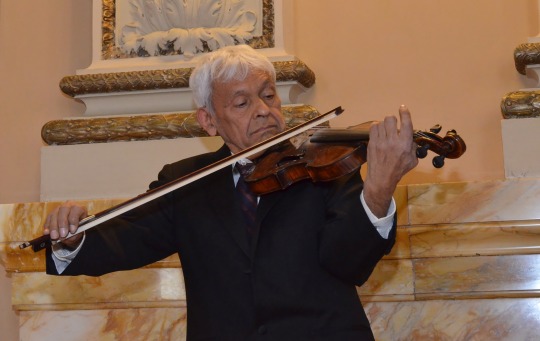

La música al mediodía
Conciertos de música clásica y popular a cargo de intérpretes del Instituto Nacional de Bellas Artes.
Domingos, 12 horas
Entrada libre / cupo limitado al aforo del recinto
Programa 15 de enero
Caro autor di mia doglia G. F. Händel Angélica Mendoza, soprano (1685- 1759) Joel Ramírez, tenor Non so piú cosa son cosa faccio W. A. Mozart Le nozze di Figaro, acto l (1756 – 1791) Liliana Cervantes, soprano Rivolgete a lui lo sguardo W. A. Mozart Cossi fan tutte, acto I (1756 – 1791) Hector Cisneros, barítono Ach! Ich füll’s W. A. Mozart Die Zauberflüte, acto I (1756 – 1791) Indra Diez de Sollano, soprano Seht auf die breiten Wiesen hin J. Haydn Die Jahreszeiten, der Sommer, parte II (1732 – 1809) Edson Cornejo, Barítono No no che non sei capace W. A. Mozart Aria de concierto, K419 (1756 – 1791) María Anaya, soprano O luce di quest’anima G. Donizetti Linda de Chamounix, acto I (1797-1848) Perla Varela Ranero, soprano Hm! Hm! Hm!... Die Zauberflüte, acto I W. A. Mozart Liliana Cervantes, Mariana Austria y (1756 – 1791) Angélica Mendoza, sopranos José Luis González, tenor Edson Cornejo, barítono Pourquoi me réveiller J. Massenet Werther, acto III (1842-1912) José Montañez, tenor Caro nome G. Verdi Rigoletto, acto II (1813-1901) Jimena León, soprano Sul fil d’un soffio etesio G. Verdi Falstaff, acto III (1813-1901) Batseba Camacho Ceja, soprano Chil bel songo G. Puccini La Rondine, acto II (1858 – 1924) Cecilia Torres, soprano Brindis G. Verdi La Traviata, acto I (1813-1901) Jimena León, soprano José Montañez, tenor Solistas Ensamble del CNM El ensamble está conformado por cantantes que cursan los últimos años de la Licenciatura de Canto Lírico Profesional. Cada uno de los integrantes cuenta con una trayectoria como solistas y coristas. Se han presentado en importantes foros y han cantado como solistas con varias orquestas profesionales mexicanas, además de tener un amplio repertorio que cubre diversas épocas de la música clásica. También abordan un repertorio de diferentes géneros musicales, tales como Ópera, Musical, Lieder, Chanson y Oratorio. Sopranos María Anaya Mariana Austria Batseba Camacho Liliana Cervantes Indra Diez de Sollano Karen González Jimena Hernández Martha López Perla Varela Mezzosopranos Itzel Beltrán Gaby Gómez Angélica Mendoza Cecilia Torres Tenores Antonio Arce Atonaltzin Delgado José Luis González José Montañez Joel Ramírez Barítonos Héctor Cisneros Edson Cornejo Carlos ronquillo Pianistas: Mtro. Fernando Núñez y Mtra. Pamela Soria Director: Germán Tort Es licenciado en dirección de orquesta por el Conservatorio Nacional de Música de México (CNM). Obtuvo el título en dirección de orquesta por el Conservatoire de Noisy-le-Sec en Francia. Realizó estudios en los conservatorios de Evry, Frédéric Chopin, de Noisy-le-Sec, L’Ecole Grégorien de Paris, L’Ecole Normale de Musique de Paris; The Pierre Monteux School for Conductors and Orchestra Musicians en Estados Unidos; The Johannes School of Art en Canadá y en el CENART en México. Ha dirigido las orquestas sinfónicas de los conservatorios de Evry, Noisy-le-Sec, de L’Ecole Normale de Musique de Paris, la Pierre Monteux Symphony Orchestra, la Orquesta de Cámara de la UNAM, Sinfónica del Ejército Nacional Mexicano, Sinfónica de la Marina Armada de México, Sinfónica “Carlos Chávez” y el Coro de la Marina. Actualmente es director del Ensamble de Música Contemporánea y de Solistas Ensamble (Coro de Cámara) del Conservatorio Nacional de Música. Es Profesor de las Cátedras de Dirección de Orquesta, Dirección Coral y en la licenciatura de educación musical, en el CNM. Además de director general del Instituto Artene.
Programa del 22 de enero
Pietro Locatelli (Italia, 1965-1764)
Sonata en Sol Menor para Violín y Clave
Largo
Allemanda
Largo
Allegro
Maria Theresia Paradis (Austria, 1759-1824)
Siciliana
Franz Schubert (Austria, 1797-1828)
Dúo en la mayor para violín y piano Op. 162
Allegro moderato
Scherzo Presto
Andantino
Allegro Vivace
Intermedio
Antonín Dvořák (República Checa, 1865-1957)
Humoreske Op. 101 núm. 7
Jean Sibelius (Finlandia, 1865-1957)
Nocturno
Enrique Espín Yépez (Ecuador, 1926 – México, 1997)
Tres danzas
Pasillo
Romanza
Danza Ecuatoriana
Piotr Ilich Chaikovski (Rusia, 1840-1893)
Meditación
Tomas Marín, violín*
José Alfonso Álvarez, piano
*Concertista de Bellas Artes
Tomás Marín
Estudió con Amelia Medina, y en el Conservatorio Nacional de Música con Joseph Smilovits. Ganó el Concurso Johann Sebastian Bach y el Prix de Rome cuando tenía 14 años de edad, lo que le valió la beca para estudiar en el Conservatorio de Santa Cecilia de Roma, con Rémy Principe. Posteriormente estudió con Georges Enescu y con Jacques Thibaud, quien lo invitó a su escuela Jacques Thibaud-Marguerite Long de París.
De regreso a México, ganó el primer lugar del Concurso Pablo Casals y volvió a Europa para asistir a los cursos de Sándor Végh y Maxim Jacobsen, en Basilea. También estudió con Joseph Sivo en Viena, y con Boris Belenky en Moscú. En México tomó los cursos de Henryk Szeryng. Se ha presentado como solista en América, Europa y Asia. Actualmente es integrante del grupo Concertistas de Bellas Artes.
José Alfonso Álvarez
Es graduado por la Escuela Nacional de Música de la UNAM (ENM) y por la Universidad Ramón Llull de Barcelona en la maestría en interpretación musical. Obtuvo el premio y medalla al mérito Gustavo Baz Prada otorgado por la UNAM en 2008; fue ganador del concurso de solistas de la Orquesta Sinfónica del IPN en 2007; y ganó los concursos internos de piano de la ENM en 2000 y 2001. Se ha presentado en México, Francia, España, Luxemburgo y Cuba. Participó en el Festival Internacional de Música de Cámara de San Miguel de Allende en 2013.
Ha sido solista de las orquestas: de Cámara y Sinfónica de la ENM, Sinfónica de Puebla, Sinfónica del IPN, Sinfónica del estado de Puebla y Sinfónica de Coyoacán bajo la dirección de Ariel Waller, Julio Vigueras, Alfredo Ibarra, Román Revueltas, Armando Vargas y Eduardo Sánchez Zúber. Recientemente presentó su primer disco titulado Vivan nuestros valses mexicanos, con obras mexicanas inéditas para cuatro manos y piano solo, al lado del pianista Ulises Marcelo Hernández. Es maestro de piano de la Escuela Vida y Movimiento del Centro Cultural Ollin Yoliztli, así como de la ENM.
Programa del 29 de enero
Franz Schubert (Austria, 1797-1828)
Impromptu en la bemol mayor Op. póstumo 142 núm. 2
Sonata en la mayor op. 120
Allegro moderato
Andante
Allegro
Intermedio
Franz Schubert
Fantasía en do mayor Op. 15 D 760, Wandererfantasie
Allegro con fuoco ma non troppo
Adagio
Presto
Allegro
Daniel Rodríguez, piano
Es egresado como pianista concertista del Conservatorio Nacional de Música y de la Universidad de Música de Viena. Triunfador del Concurso Nacional de Piano Sala Chopin en la Ciudad de México en 1982; se presenta con regularidad en importantes escenarios del país, y recientemente toca a dúo con Daniel Rodríguez Badillo en la Ciudad de México y el interior de la República.
Sus maestros han sido: Alfonso Rendón y María Teresa Castrillón en México, Carmen Graf-Adnet en Austria, y France Clidat en Francia. Ha participado como ejecutante en clases magistrales con Jörg Demus, Paul Badura-Skoda, Angélica Morales y Alicia de Larrocha. Asimismo, realizó estudios en la Escuela Normal de Música Alfred Cortot en París y se ha presentado como solista con importantes orquestas de México. Es invitado con regularidad como jurado de importantes concursos nacionales y ha impartido clases magistrales en varias ciudades del país. Ha grabado dos discos, uno con obras del compositor mexicano Isaías Noriega de la Vega y otro con obras de Manuel M. Ponce, Heitor Villa-Lobos, Darius Milhaud y Samuel Barber. Desde 1988 es integrante del grupo Concertistas de Bellas Artes.
#Música clásica#conciertos#La música al mediodía#Schubert#Donizetti#Mozart#Verdi#Händel#UNAM#Cultura UNAM#CCU Tlatelolco#Tlatelolco#enero 2017 tlatelolco
2 notes
·
View notes
Text


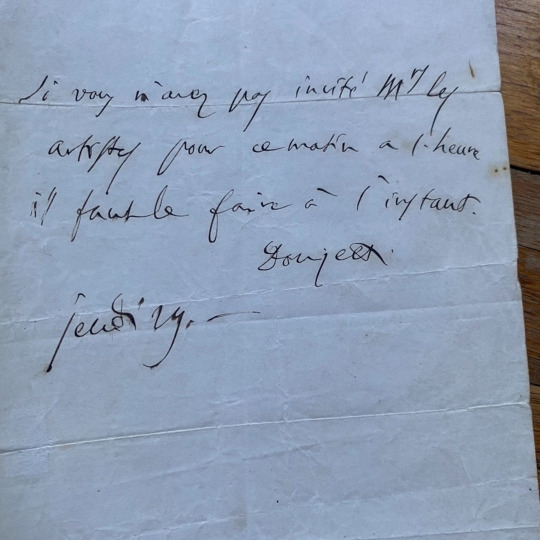
OTD in Music History: Great “bel canto” Italian opera composer Gaetano Donizetti (1797 – 1848) dies of tertiary syphilis in an asylum in Bergamo. A prolific “transitional” composer whose numerous operas – written in both Italian and French – are illustrative of the substantial musical evolution that took place in opera between Gioachino Rossini (1792 – 1868) and Guiseppe Verdi (1813 – 1901), several of Donizetti’s later works still continue to hold the stage, including “L’elisir d’amore” (1832), “Lucia di Lammermoor” (1835), and “Don Pasquale” (1843). Donizetti actually scored his first success with “Enrico di Borgogna” (1818), and during the next 12 years he cranked out more than 30 operas – although most of them were merely local hits in Italy and have long been forgotten. In 1830, "Anna Bolena” made his name across Europe, and two years later he scored a truly lasting success with “L’elisir d’amore.” Like Rossini and Vincenzo Bellini (1801 - 1835) before him, Donizetti eventually left Italy for Paris, where he began to successfully exploit the “French grand opera” model (which was essentially the 19th Century's versio of a Las Vegas show). By the early 1840s, however, Donizetti was well in the grip of the advanced syphilitic infection that would eventually kill him. He produced his last important opera, “Dom Sébastien” (1843), under the strain of near-constant headaches and occasional lapses of mental capacity; his final years were a sad story of mental and physical degeneration as he was confined to a series of asylums. Extremely popular during his own lifetime, after his premature death, Donizetti’s operas were almost entirely eclipsed by the later masterpieces of Verdi and Giacomo Puccini (1858 - 1924); it was only in the latter half of the 20th Century that the “bel canto” revival brought about the renewed interest in his work that continues to this day. PICTURED: A short undated (but c. 1840s) note regarding musical matters addressed by Donizetti to a “Monsieur Duclos,” who was affiliated with the famous Parisian “Theater-Italien” (the primary opera house that produced Italian opera within the city at that time).
#Gaetano Donizetti#Donizetti#opera#classical music#music history#bel canto#composer#aria#classical composer#classical musician#classical studies#Lucrezia Borgia#La fille du régiment#Linda di Chamounix#Don Pasquale#Lucia di Lammermoor#Orchestra#maestro#Concerto#Chamber music#music
7 notes
·
View notes
Text
Hot Vintage Stage Actress Round 3


Pola Negri: Anieli in Śluby panieńskie (1912 Warsaw); Hedvig in The Wild Duck (1914 Warsaw); Yannaia in Sumurun (1917 Berlin)
Lily Pons: Lakmé in Lakmé (1928 Mulhouse); Lucia in Lucia di Lammermoor (1931 Met); Linda in Linda di Chamounix (1934 Met)
Propaganda under the cut.
Pola Negri:
A bisexual femme fatale sex symbol from Poland, we love to see it! She dated Valentino and Chaplin and spent like two decades living with her oil heiress girlfriend. She was living the life, the hottest catch, ten out of ten would marry her





Lily Pons:




#much love and appreciation to the anon helping me with polish grammar🙏#vintagestagehotties#vintagestagepoll#vintage poll#vintage tournament#vintage ladies#pola negri#lily pons#ladies round 3
13 notes
·
View notes
Text
May in 19 in Music History
1601 Death of Italian composer Costanzo Porta in Cremona.
1746 Birth of composer Johann Friedrich Peter.
1755 Birth of composer Gabriele Prota.
1770 Birth of composer Antoine-Charles Glachant.
1786 Death of English composer John Stanley in London.
1810 FP of Kreutzer's "Jerry und Bätely" Vienna.
1827 FP of Carafa's "Sangarido" Paris.
1839 Birth of composer Alice Mary Smith.
1842 FP of G. Donizetti's opera Linda di Chamounix in Vienna.
1859 Birth of Australian soprano Dame Nellie Melba.
1873 Birth of composer Federico Gerdes.
1876 Birth of Italian soprano Rosina Storchio in Venice.
1876 Birth of composer Jan Ingenhoven.
1878 Birth of composer Adam von Ahn Carse.
1884 Birth of Belgian composer Arthur Meulemans Aarschot.
1886 Birth of German harpist Joseph E. Schuecker.
1886 FP of Camille Saint-Saen's Symphony No. 3, the Organ Symphony for organ, two pianos and orchestra, in London.
1895 Birth of Scottish composer Cecil Gray.
1895 Birth of composer Albert Hay Malotte.
1896 Birth of Swedish mezzo-soprano Kerstin Thorborg.
1901 Birth of composer Ivo Cruz.
1908 Birth of Italian soprano Gianina Perea Labia in Milan.
1909 Birth of composer Schlomo Joffe.
1911 FP of Ravel's L'Heure espagnole at The Opera Comique in Paris.
1912 Birth of British organ craftsman Noel Mander.
1915 Birth of American composer Irving Gertz in Providence, RI.
1915 FP of I. Stravinsky's Three Pieces for string quartet, in Paris.
1924 Birth of English composer Sandy Wilson. 1926 Birth of American composer Paul Cooper in Victoria, IL.
1928 Birth of Austrian soprano Antonia Fahberg in Vienna.
1928 Death of American composer Henry Gilbert in Cambridge, MA.
1929 Birth of composer Michael Adamis.
1930 Birth of Dutch composer Hans Kox Aarschot.
1931 Birth of composer Ruben Radica.
1931 Birth of Swiss tenor Eric Tappy in Lausanne.
1932 FP of D. Shostakovich's incidental music for Shakespeare's Hamlet at the Vakhtangov Theater in Moscow.
1933 Birth of Spanish composer Abril Antón Garcia in Teruel.
1934 Birth of Dutch composer Christiaan Verhoog in The Hague Netherlands.
1934 Birth of Dutch pianist Jan Wijn.
1935 FP of Egk's "Die Zaubergeige" Frankfurt.
1935 Death of German-American composer Charles Martin Loeffler.
1939 Birth of American composer Richard Teitelbaum.
1939 Birth of American conductor George Posel in Cleveland.
1939 FP of H. Cowell's Return for 3 percussionists and wailer. John Cage Percussion Group at the Cornish School in Seattle, WA.
1939 Birth of composer Tomasz Sikorski.
1940 Death of baritone Dinh Gilly.
1941 Birth of French mezzo-soprano Jocelyne Taillon.
1941 Birth of composer Marc-Antonio Consoli.
1945 FP of Lockwood's "The Scarecrow" NYC.
1949 Birth of English baritone Stephen Varcoe in Lostwithiel, Cornwall.
1950 FP of Foss' "The Jumping Frog of Calaveras County" Blooming, IN.
1953 Death of tenor Frank Mullings.
1954 Death of American composer, organist Charles Ives in NYC, at age 79.
1959 Death of German soprano Margarete Teschemacher.
1960 FP of Bliss' "Tobias and the Angel" on BBC-TV, London.
1963 Death of Hungarian mezzo-soprano Margarethe Matzenauer.
1967 FP of Ginastera's "Bomarzo" Washington, DC. 1977 FP of Argento's Mono Drama "A Water Bird Talk" Brooklyn Academy, NYC.
1979 Death of Belgian composer David van de Woestijne in Brussels.
1980 FP of Holliger's "What Where" chamber opera, Frankfurt.
2000 FP of Robert X. Rodriguez's The Last Night of Don Juan for chorus and orchestra. San Antonio Symphony and chorus, Christopher Wilkins conducting.
2002 Death of American soprano Willa Stewart in Austin, TX.
2002 FP of William Bolcom's Seventh Symphony, A Symphonic Concerto Metropolitan Opera Orchestra, James Levine conducting at Carnegie Hall in NYC.
0 notes
Photo

Alle eingeladen! Opernabend: Lust und Liebe!. Studierende der Klasse Prof. Turid Karlsen. Wann? : Freitag 13 April, um 19:00 Uhr. Wo? : Konzertsaal, HMDK Stuttgart (Urbanstraße 25, Stuttgart) Arien und Ensemble von Opern wie Die Zauberflöte, Die Fledermaus, Les Contes d'Hoffmann, Linda di Chamounix, Rusalka, La Sonnambula, La Boheme und mehr... Ticket verfügbar: https://www.hmdk-stuttgart.de/veranstaltungen/veranstaltungskalender/datum/2018-04-01/veranstaltung/opernabend/ansicht/details/ (en Stuttgart, Germany)
0 notes
Text
Pretty Yende, soprano
A soprano sul-africana Pretty Yende ganhou fama internacional em 2010, quando se tornou a primeira artista da história a vencer o Concurso Belvedere em todas as categorias. No ano seguinte, conquistou o primeiro lugar no Concurso Operalia, de Plácido Domingo. A estreia profissional de Pretty Yende se deu no Teatro Nacional da Letônia, em Riga, no papel de Micaela em Carmen. Desde então, vem sendo vista em praticamente todos os principais palcos do mundo, incluindo a Metropolitan Opera de Nova York, o Teatro alla Scala de Milão, o Covent Garden de Londres, a Deutsche Oper Berlim e muitos outros.
Na temporada 2015/2016, a agenda profissional de Pretty Yende incluiu o papel principal em Lucia di Lammermoor na Deutsche Oper Berlim, Adina em O Elixir do Amor na Staatsoper Berlim, Pamina em A Flauta Mágica no Grand Theatre de Genebra, Elvira em Os Puritanos na Opernhaus de Zurique, além da estreia na Ópera de Paris como Rosina em O Barbeiro de Sevilha e de concertos em Johanesburgo, Cidade do Cabo, Viena e Pesaro. Compromissos futuros incluem Lucia di Lammermoor na Ópera Nacional de Paris, O Elixir do Amor na Bayerische Staatsoper (Munique) e no Covent Garden (Londres), O Barbeiro de Sevilha e Romeu e Julieta na Metropolitan Opera em Nova York, bem como concertos em Praga, Viena, Paris e São Paulo.
Na temporada 2014/2015, Pretty Yende interpretou Pamina em A Flauta Mágicana Metropolitan Opera de Nova York, Rosina em O Barbeiro de Sevilha em Oslo, o papel-título em Lucia di Lammermoor na Deutsche Oper Berlim, Norina em Dom Pasquale, em sua estreia no Gran Teatre del Liceu em Barcelona, além de estrear no papel de Susanna em As Bodas de Fígaro na LA Opera em Los Angeles. A cantora também se apresentou em concertos em Viena, Munique, Amsterdã e no Carnegie Hall de Nova York. Na temporada 2013/2014, estreou na LA Opera de Los Angeles, interpretando Micaela em Carmen, estreou em Hamburgo, como Fiorilla em O Turco na Itália, e retornou ao Teatro alla Scala de Milão, em O Conde Ory.
Em janeiro de 2013, Pretty Yende estreou com extraordinário sucesso na Metropolitan Opera de Nova York, como a Condessa Adele de O Conde Ory, entrando para o elenco com poucas semanas de antecedência para contracenar com Juan Diego Florez. Em seguida, interpretou o mesmo papel em sua estreia no Theater an der Wien. A temporada 2012/2013 trouxe ainda o papel principal em Lucia di Lammermoor em um concerto na Ópera da Cidade do Cabo, além de Musetta em La Bohème no Teatro alla Scala de Milão. Recém-formada pela Academia de Jovens Artistas do Teatro alla Scala em 2011, Yende estreou com a companhia em 2010, como Berenice em A Ocasião faz o Ladrão, de Rossini.
Javier Camarena, tenor
Javier Camarena ficou conhecido como furacão do mundo da ópera em 2014, quando entrou para o time de Luciano Pavarotti e Juan Diego Flórez ao ser o terceiro cantor em 70 anos a dar um bis na Metropolitan Opera House de Nova York. Camarena magnetizou o público ao cantar a ária do Príncipe Ramiro, “Si ritrovarla io guiro”, em duas récitas consecutivas de La Cenerentola de Rossini. Meses mais tarde, repetiu o feito no Teatro Real de Madri, cantando 18 Dós agudos perfeitos, no bis, em “Ah! Mes amis, quel jour de fête”, na ária de Tonio da ópera A Filha do Regimento, de Rossini. O tenor é o primeiro na história de ambas as casas de ópera a dar bis em duas récitas seguidas.
Tom intenso, vocalização firme e flexível e coloratura ostensiva renderam a Javier Camarena papeis importantes, créditos ao lado de cantores mundialmente famosos, além de trabalhos sob a batuta de regentes notáveis como Claudio Abbado, Zubin Mehta e Fabio Luisi. Desde sua estreia em Zurique, em 2007, Camarena vem sendo admirado por suas atuações fascinantes, em um repertório interpretado por pouquíssimos profissionais de gabarito internacional, que abrange obras de Bellini, Bizet, Donizetti, Haydn, Mozart, Rossini e Verdi. Suas extraordinárias interpretações já foram vistas em algumas das mais importantes salas de ópera e concerto da Europa, como a Staatsoper de Viena, Ópera de Paris, Staatsoper da Baviera, Semperoper de Dresden, Wigmore Hall de Londres e no Festival de Verão de Salzburg, entre muitos outros locais de prestígio. Nos Estados Unidos, o tenor foi aclamado tanto na Ópera de São Francisco como na Metropolitan Opera de Nova York.
Em 2014, Javier Camarena lançou Recitales, seu álbum de estreia com canções italianas e mexicanas gravadas ao vivo. Em 2015, em seu segundo registro ao vivo, Serenata, gravou canções populares mexicanas tendo o pianista Armando Manzanero como convidado especial (o CD recebeu o prêmio Grammy pelo Conjunto da Obra).
Em DVD/Bluray, o tenor participou das produções de Così fan tutte de Mozart (2009), Falstaff de Verdi (2011), Otelo e O Conde Ory de Rossini (2014) – nesta última dividindo créditos com Cecilia Bartoli. Todos os trabalhos foram orquestrados pela Ópera de Zurique. Também em DVD/Bluray, participou de O Rapto do Serralho de Mozart (2014), em montagem inédita gravada no Hangar-7 em Salzburg; uma segunda versão de Falstaff de Verdi (2014), sob a batuta de Zubin Mehta; bem como da Missa solemnis em Dó menor, K. 139, “Waisenhausmesse”, de Mozart; e da Missa No. 6 em Mi bemol maior, D. 950, de Schubert (2012), sob regência de Claudio Abbado, apresentada e gravada durante o Festival de Salzburg.
Nascido na cidade mexicana de Xalapa, Veracruz, Javier Camarena concluiu os estudos de música com distinção na Universidade de Guanajuato. Em 2004, venceu o Concurso Nacional Carlo Morelli, no Palácio de Belas Artes do México, e estreou como Tonio em A Filha do Regimento, de Donizetti. Em 2005, recebeu o Prêmio Juan Oncinas em Barcelona, e em 2006 entrou para o Estúdio Internacional de Ópera em Zurique, sob orientação de Francisco Araiza. De 2013 a 2015, figurou na lista de maiores líderes da publicação Lideres Mexicanos. Em 2014/2015 foi incluído entre os 50 líderes transformadores do México pela revista Quién.
Projetos futuros incluem, entre outros, a estreia na Royal Opera Covent Garden de Londres como Almaviva (O Barbeiro de Sevilha), o papel de Ramiro (La Cenerentola) em Munique e Bilbao, o retorno ao Metropolitan Opera House de Nova York (O Barbeiro de Sevilha e Os Puritanos) e a volta a Zurique (Os Puritanos e O Barbeiro de Sevilha), além da estreia como Duca (Rigoletto) no Gran Teatro Liceu de Barcelona, onde em breve deve encenar um de seus papéis favoritos: Tonio em A Filha do Regimento.
Angel Rodriguez, piano
De origem cubana e radicado no México, o pianista e compositor Ángel Rodríguez iniciou seus estudos de música aos cinco anos de idade. Estudou piano com Gonzalo Gutiérrez, repertório vocal com Enrique Jaso e regência com Gonzalo Romeu.
Ao longo da carreira de mais de 25 anos, foi pianista acompanhador de personalidades notáveis do cenário lírico internacional – como Ramón Vargas, Rolando Villazón, Javier Camarena, Joseph Calleja, Nathalie Manfrino, Franco Vassallo, Ailyn Pérez, Alfredo Daza, Eglise Gutiérrez, Fernando de la Mora, Kate Lindsey, Rosario Andrade, Timothy Robert Blevins, Rebeca Olvera, Arturo Chacón, Maria Katzarava, Carlos Almaguer, José Bross, Dario Solari, entre muitos outros.
Ángel Rodríguez tocou em importantes salas de concerto da Europa, Ásia e América, entre as quais se destacam o Palácio de Belas Artes na Cidade do México, Teatro Real de Madri, Termas de Caracalla em Roma, Konzerthaus Berlim, Kennedy Center em Washington, Harris Theater em Chicago, Opernhaus de Zurique e o prestigioso Rosenblatt Recitals em Londres.
O pianista participou ainda do documentário Rolando Villazón – Um Sonho Mexicano, acompanhando o famoso tenor em um programa que foi transmitido pelo canal Arts. Apresentou-se na Expo Mundial em Xangai em 2010 e foi solista da Orquestra de Câmara Kremlin em Moscou, além de ter tocado para o Rei Juan Carlos e para a Rainha Sofia da Espanha. Com a Ópera de Cuba e com a Ópera de Belas Artes na Cidade do México, Ángel Rodríguez cobriu um repertório com mais de noventa títulos ao lado de grandes astros e estrelas como Plácido Domingo, Luciano Pavarotti e Anna Netrebko, entre outros.
Recentemente, o músico fez os arranjos orquestrais do evento de gala Três Gerações, com os renomados tenores Francisco Araiza, Ramón Vargas e Javier Camarena.
Sua produção fonográfica inclui dois CDs com o célebre tenor Javier Camarena e um CD com a mezzo-soprano María Luisa Tamez.
Atualmente, Ángel Rodríguez dá masterclasses de interpretação e estilo de ópera italiana no México, paralelamente ao trabalho como recitalista ao lado de grandes cantores e à sua importante atuação como arranjador e produtor musical.
Programa Apresentado:
Gaetano Donizetti (1797–1848) “Una parola, o Adina” (de “L’elisir d’amore”) Pretty Yende & Javier Camarena (duo)
Gioachino Rossini (1792 – 1868) “Una voce poco fa” (de “Il barbiere di Siviglia”) Pretty Yende “Sì, ritrovarla io giuro” (de “La cenerentola”) Javier Camarena “Non si da follia maggiore”(de “Il turco in Italia”) Pretty Yende
Vincenzo Bellini (1801 – 1835) “È serbato a questo acciaro… L’amo tanto” (de Capuleti e i Montechi) Javier Camarena “Elvino! E tu mi lasci… Son geloso del zefiro errante” (de “La sonnambula”) Pretty Yende e Javier Camarena (duo)
INTERVALO (20 minutos)
Gaetano Donizetti (1797–1848) “O luce di quest’anima” (de “Linda di Chamounix”) Pretty Yende “Tombe degli avi miei… Fra poco a me ricovero” (de “Lucia di Lammermoor”) Javier Camarena “Tornami a dir che m’ami” (de “Don Pasquale”) Pretty Yende e Javier Camarena (duo)
Vincenzo Bellini (1801 – 1835) “Ah, non credea mirarti… Ah, non giunge” (de “La sonnambula”) Pretty Yende
Giuseppe Verdi (1813 – 1901) “Ella mi fu rapita… Parmi veder le lagrime” (de “Rigoletto”) Javier Camarena “Signor né principe… È il sol dell’anima” (de “Rigoletto”) Pretty Yende e Javier Camarena (duo)
*Informações retiradas na integra: mozarteum.org.br
This slideshow requires JavaScript.
Mozarteum Brasileiro apresenta: Pretty Yende, soprano A soprano sul-africana Pretty Yende ganhou fama internacional em 2010, quando se tornou a primeira artista da história a vencer o Concurso Belvedere em todas as categorias.
0 notes
Link
0 notes